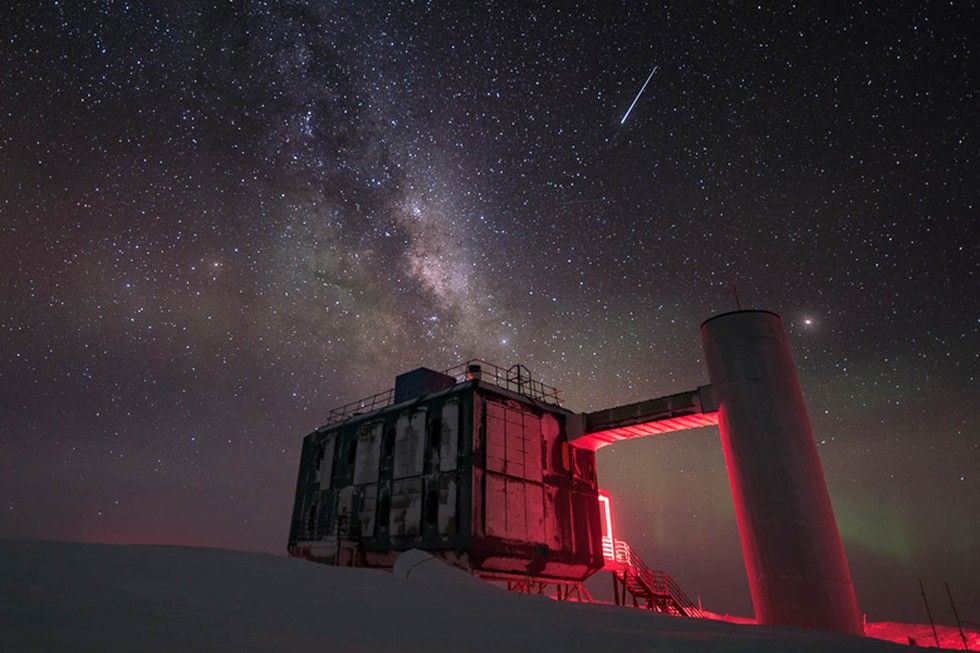About IceCube Neutrino Observatory:
- It is a device at the earth’s South Pole that detects subatomic particles called neutrinos. It was built and is maintained by the IceCube Collaboration, which consists of many universities worldwide led by the University of Wisconsin, Madison.
- It consists of thousands of sensors buried more than 1.4 km beneath the ice plus multiple detectors above the surface. It is the world’s biggest ‘neutrino telescope’.
- Working:
- When a neutrino interacts with the ice surrounding the sensors, it may produce some charged particles and some radiation.
- The sensors detect the radiation to infer the detection of a neutrino and use the radiation’s properties to understand more about the particle.
- Neutrinos come in different types. IceCube can identify some of them in real-time.
